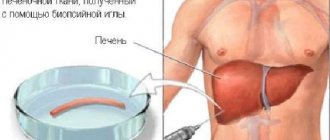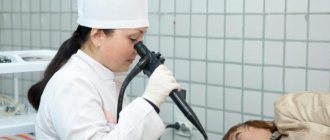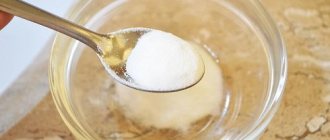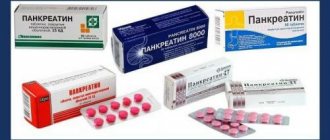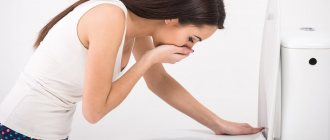What is duodenal intubation
The duodenal sounding procedure is a diagnostic method that is used to examine the liver and biliary tract. For medicinal purposes, a medical measure is used to remove the contents of the gallbladder. Carrying out such a diagnostic manipulation becomes possible thanks to special equipment - a duodenal probe, which in appearance is a tube made of flexible material 150 cm long and 3-5 mm in diameter. At the tip of the device there is a metal olive with holes on the surface.
A duodenal tube can enter the body through the digestive system, so the tube and other parts must be absolutely sterile. Using the device, doctors select the required amount of bile, gastric, intestinal and pancreatic juice from the duodenum. The duodenal diagnostic method is required if it is necessary to obtain information about the activity of the pancreas, the condition of the liver, biliary tract and gallbladder capacity.
General concepts of the anatomy and function of the liver and gallbladder
The liver, together with the gallbladder, forms a special system - part of the digestive tract. In addition to processing food, the liver also belongs to the immune system; in addition, it performs a protective function, and partially the function of hematopoiesis.
Anatomically, the liver is located in the abdominal cavity, it is formed by two parts - the left and right lobes. Most of it is located in the upper right part of the peritoneum. The left lobe partially passes into the left half of the abdominal cavity.
The location of the liver is under the diaphragm. The upper border of the organ is located at chest level, it is convex and follows the shape of the diaphragm. The lower edge is 1-2 centimeters below the arch of the ribs, concave in appearance, as it comes into contact with other internal organs.
The right lobe of the liver is approximately 6 times larger than the left. The mass of the organ ranges from one and a half to two kilograms.
In the middle part of the internal surface of the organ, the hepatic gate is located - at this place the hepatic artery enters the liver, from there exit the portal vein and the hepatic duct, which removes bile from the liver.
The gallbladder is “hidden” under the gate of the organ - a small hollow organ similar to a sac. It is adjacent to the outer edge of the liver and lies on the duodenum. The normal length of the organ is from 12 to 18 centimeters. The structure of the bladder is represented by the bottom, body and neck, which passes into the cystic duct.
The liver is responsible for the secretion of bile, a fluid that breaks down fats, enhances intestinal motility and the action of pancreatic and intestinal enzymes. Bile also helps neutralize the acidic environment of the bolus of food that leaves the stomach, and helps absorb cholesterol, amino acids, calcium salts and fat-soluble vitamins.
The liver is involved in all metabolic processes in the body - protein, fat, carbohydrates.
The organ also produces hormones, stimulates the production of hormones by the adrenal glands, thyroid and pancreas.
In addition, the liver is a huge protective filter that neutralizes the effects of toxins, poisons, medications, and allergens.
Bile produced by the liver passes into the gallbladder, where it accumulates until the food that it is needed for digestion enters the body.
Indications for duodenal intubation
The main indications for probing the liver and gallbladder are the following symptoms:
- the appearance of bitterness and putrid odor in the mouth;
- various gastrointestinal disorders: alternating constipation and diarrhea, flatulence, bloating;
- frequent nausea;
- pain in the right hypochondrium;
- bile stagnation;
- suspicion of the presence of helminths (probing for parasites is required).
- Zucchini caviar with mayonnaise and tomato paste for the winter
- Signs of measles in children and adults
- Pike perch baked in the oven: recipes
Reviews
Olya, 43 years old The doctor suspected that I had parasites, so the doctor prescribed duodenal intubation. I knew that this was an unpleasant procedure, but I didn’t think it would be that much. I barely survived this torture. The price didn't bother me. The bile was tested in the laboratory for several days, and as a result it turned out that I did not have any parasites.
Oleg, 33 years old I was bothered by abdominal pain and heartburn, so I consulted a doctor. He prescribed duodenal intubation for me because he suspected cholecystitis. I took the recommendations and prepared for the procedure. On the appointed day, probing was carried out. It turned out that I had parasites in my body. They cause the symptoms of cholecystitis. I am currently undergoing treatment for parasites.
Ira, 37 years old Duodenal intubation had to be performed twice, because the doctor suspected that I had parasites, but after the first procedure he did not find any eggs in the material. After the second study, the diagnosis was confirmed. It's good that probing is inexpensive. It was very difficult to bear; I could barely cope with vomiting.
Preparation
Proper preparation of the patient for duodenal intubation is very important. The process is a set of measures consisting of the following actions:
- discontinuation of choleretic, laxative, antispasmodic and enzyme medications 5 days before the expected sounding;
- a diet that you need to start following 2-3 days before the study;
- refusal to eat 12 hours before the procedure - probing is carried out on an empty stomach;
- bowel cleansing in the evening before duodenal examination.
Diet before probing
Preparation for duodenal intubation involves following a diet. Dietary restrictions are not strict - on the eve of the study, the patient is allowed to eat his usual food. Experts recommend limiting the consumption of large amounts of foods that stimulate the biliary system. You should eat less fatty and fried foods, vegetable oil, dishes containing eggs, soups based on rich fish and meat broths, sour cream, cream, and sweets.
It is not recommended to drink strong tea, coffee, carbonated drinks, or alcohol. Fruits, vegetables and berries have a strong stimulating effect on the gallbladder. When consuming these products, the secretory function of the organ is significantly enhanced. You should not combine vegetables with vegetable oils. Such a union provokes bile secretion. The diet must be followed by the patient for 2-3 days before duodenal examination.
Features of the manipulation
At the initial stage of the study, the person should be in an upright position . Next, perform the following steps:
- The healthcare professional marks the distance from the navel to the mouth.
- The patient sits down on the couch and is given a special container for saliva in his hand.
- The person should loosen the belt and collar so that nothing interferes with the procedure.
- The specialist will give a short instruction on breathing and swallowing the olive.
- When gag reflexes appear, the patient will have to firmly secure the probe with his teeth and concentrate on breathing.
- An olive is placed on the root of the tongue, and the patient makes several swallowing actions.
Do not rush when swallowing the device, otherwise it may clot in the stomach.
If you need to confirm the location of the olive, the specialist looks at the color of the pumped out mass.
For the procedure, a thin probe with a length of at least 1.5 m is used
A syringe is also used to inject oxygen into the probe. If at the same time the patient hears rumbling in the stomach, this indicates that the olive has reached the stomach. Otherwise, its location is the duodenum.
The patient lies on his right side and a warm heating pad is placed under his side.
Execution technique
Duodenal examination using a probe can be carried out in two versions: classical and fractional. The first technique, consisting of three phases, is practically not used because it is considered obsolete. As a result of the procedure, the specialist receives three types of bile for study: duodenal, hepatic, and cystic. These fluids are taken from the duodenum, bile ducts and bladder, and liver.
The fractional technique of duodenal intubation consists of 5 phases of pumping out bile secretion, which change every 5-10 minutes:
- The first phase is the release of portion A. Liquid is taken at the stage of the probe entering the duodenum before the use of cholecystokinetic agents. The duration of the probing phase is 20 minutes, during which the duodenal contents, consisting of pancreatic, gastric and intestinal juices, and bile, are pumped out.
- At the second stage of duodenal examination, the specialist introduces magnesium sulfate, the release of bile from the spasm of the sphincter of Oddi stops. The duration of this phase varies between 4-6 minutes.
- The third stage of probing is characterized by sampling the contents of the extrahepatic bile ducts and lasts 3-4 minutes.
- The fourth phase of the duodenal examination consists of isolating portion B: the contents of the gallbladder, the secretion of thick bile of a dark yellow or brown hue.
- At the final stage of probing, specialists begin to pump out bile, which has a golden hue. The process takes about half an hour.
Algorithm
Duodenal examination by probing involves a sequential algorithm:
- The patient should assume a sitting position with his back straight. The specialist places the tip of the probe, on which the olive is located, into the oral cavity of the person being examined - it must be swallowed.
- The umbrella then begins to sink deeper through slow swallowing.
- When the hose for duodenal examination drops inward by 40 cm, it is necessary to advance it another 12 cm. At this stage, a syringe is attached to the device, which helps to collect gastric juice.
- The next step is to swallow the rubber tube for probing to the 70 cm mark.
- When the duodenal tube is immersed to this depth, the patient should lie on the right side. In this case, the specialist places a pillow under the pelvis of the person undergoing probing, and a warm heating pad is placed under the ribs.
- The outer free end of the duodenal hose is lowered into a test tube on a stand designed to collect secretions.
- Immersion of the probe continues until the 90 cm mark. From 20 to 60 minutes are allotted for this stage of duodenal sounding.
- After the olive enters the duodenum, the tube is filled with yellow duodenal fluid;
- When all phases of the procedure have completed, the probing hose is removed with gentle movements.
- How to get your girlfriend back
- How to tie a scarf on a coat
- What Vasco da Gama discovered: the traveler’s sea route
What types of procedures can be performed
Duodenal intubation may differ depending on how it is performed. Doctors highlight:
- blind probing, when the patient does not have to swallow the probe - liquid is used for the procedure;
- fractional or multi-stage: in this case, the collection of intestinal contents is carried out at a certain interval, for example, every five minutes;
- chromatic sounding implies that before diagnosis, a dye is injected into the patient;
- a minute-long procedure makes it possible to assess the condition and functioning of the sphincters.
How to swallow a tube correctly
Probing of the liver and gallbladder will be successful if the patient can swallow the tube correctly. The doctor must carefully move the device through the esophagus and stomach to the required marks that are on the hose. Sudden swallowing can cause the probe to curl up, requiring repeated immersion, so the process must be carried out progressively. As the tube is inserted into the digestive system, the patient should breathe through the nose to relieve discomfort.
Contraindications
It is prohibited to prescribe the procedure if there are the following contraindications:
- diseases of the digestive system of a chronic nature;
- cholecystitis (acute or during exacerbation);
- dilation of the veins of the esophagus;
- heart attacks and angina pectoris of any nature;
- tumors in the gastrointestinal tract of a chronic nature;
- narrowing of the esophagus;
- pregnancy and lactation;
- nervous and mental disorders;
- child's age up to 3 years;
- ulcer of the duodenum and stomach;
- internal bleeding;
- inflammatory processes of the gallbladder;
- abnormally formed oropharynx and esophagus;
- bronchial asthma;
- severe diabetes mellitus.
Analysis results and interpretation
You can probe for parasites, the presence of helminthic infestations (giardia, cat or liver fluke), bacterial infections (typhoid fever, E. coli, staphylococci, Pseudomonas aeruginosa, streptococci). Using the procedure, the inflammatory process, hepatitis, blockage of the bile ducts with stones, incompetence of the bladder sphincter, pathology of the duodenum or pylorus are determined.
The resulting stomach contents are sent for bacteriological and microscopic examination. Based on the duration of each phase, the doctor can understand about spasm of smooth muscles, stones, tumors, and problems with the functioning of the digestive system. Analysis of indicators:
- Color – portions A and C should have a light golden hue, B should be darker. A change in color indicates inflammation, kinking, or enlargement of the head of the pancreas.
- Transparency - slight cloudiness is considered normal.
- Composition density: A – 1002-1016, B – 1016-1032, C – 1007-1011. An increase in density indicates thickening of bile, cholelithiasis.
- Sterility - if helminth eggs and Giardia are found in the discharge, this indicates a parasitic infection. If there are mucous inclusions - inflammation, epithelium - damage to the internal membranes of the organ, leukocytes - local inflammatory process, red blood cells - blood problems.
- Portions of bile are examined for bile acids, bilirubin, and cholesterol.
Price
The cost of probing depends on the clinic where you will have it done. The procedure in Moscow is carried out by private and public medical institutions. When choosing a specialist, make sure of his reliability and professionalism. The cost of the study in Moscow varies from 400 to 5800 rubles. You can compare prices for the procedure in different clinics using the table:
| Clinic | Price (rubles) |
| Be healthy | 1175 |
| Medicine 24/7 | 600 |
| KB MSMU im. Sechenov | 330 |
| City Clinical Hospital No. 1 named after. Pirogov | 900 |
